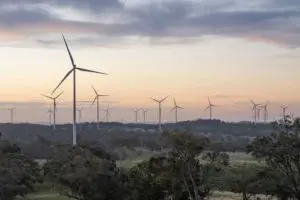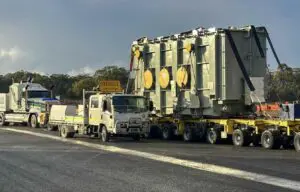The federal government’s ambitious, $6.5 billion Snowy 2.0 pumped hydro project is one step closer to being realised this week, after the New South Wales government gave the all-clear for a start to preliminary works, including a 3.1km tunnel in the Heritage listed Kosciuszko National Park.
The majority federal government-owned gen-tailer, Snowy Hydro said last week that the state’s planning approval for exploratory works on Snowy 2.0 was another “significant milestone” for the scheme.
It said the decision, of the back of a “a rigorous environmental and planning assessment process,” would pave the way for work to begin “soon” on Snowy 2.0, subject to shareholder approval.
Snowy 2.0 – a pet project of former prime minister Malcolm Turnbull – proposes to create 2000MW of “on-demand” generation and 350,000MWh of storage.
The approved early works will involve excavating an exploratory tunnel to better gauge the geological conditions at the proposed site of Snowy 2.0, as well the upgrade and establishment of access roads, and the establishment of a construction compound and supporting infrastructure.
Snowy Hydro CEO Paul Broad said the NSW government’s support for Snowy 2.0 was critical for the project, which in turn was “critical” for the security, affordability and reliability of the National Electricity Market (NEM) in the future.
“The mighty Snowy Scheme keeps the lights on across the National Electricity Market at times of peak demand today, and Snowy 2.0 will build on our existing capabilities,” Broad said.
“With more intermittent renewables coming online Snowy 2.0 will create an additional 2000 megawatts of on-demand energy generation and 175 hours of large-scale storage so households and businesses have energy when they need it most.
“Snowy 2.0 will deliver reliable energy at times of peak demand and can ‘fill the gaps’ by generating when wind and solar energy output is low.”
But news of the approval – which has so far gone almost unreported in mainstream media – has not been welcomed by all.
Among those opposing the project are the National Parks Association of NSW, which argues that Snowy 2.0 will only add to the enormous environmental damage already done to Kosciuszko National Park by human interventions like the first Snowy scheme, and the introduction of feral horses.
“While a nation-building project, the Snowy Mountains Hydro Scheme caused enormous environmental damage across 380 sites, 36 requiring major earthworks and revegetation,” an NPA spokesperson said.
“While the NPA supports a shift to renewable energy to decarbonise the electricity sector and supports pumped hydro as a component of this shift, it remains opposed to Snowy 2.0 despite the government’s assurances.”
Among its concerns, the NPA points to the more than 7 million cubic meters of rock spoil that will be excavated from tunnelling – enough to cover a football field to a height of 1.5km – as well as the addition of new high-voltage transmission lines.
But Broad says that Snowy Hydro takes its environmental responsibilities “very seriously,” and would do anything and everything possible to avoid or minimise impacts from construction of Snowy 2.0.
“Snowy Hydro will provide $10.5 million to offset any impacts from the Exploratory Works,” he said.
And the NSW government, which is responsible for allocating the offsets, has made the commitment that Snowy 2.0 offsets will be used by National Parks and Wildlife Service to support local environmental and recreational initiatives in Kosciuszko National Park.
But the NPA said that the idea of providing offsets and compensation was “deeply flawed” and one that “typically acts to rubber-stamp development no matter what the impacts.”
Among the impacts, it says, would include more than 7 million cubic meters of rock spoil being excavated from tunnelling – enough to cover a football field to a height of 1.5km.
New high-voltage transmission lines and towers would require an easement 100m wide and 10km long to be cut through bushland; and 30km of roads would require upgrading, widening and extension.
“No consideration is being given to alternative pumped hydro solutions, despite this being a requirement of an EIS as detailed in Schedule 2 of the Environmental Planning and Assessment Regulation 2000,” an NPA spokesperson said.
“Alternatives do exist, both within the Snowy Scheme, with much less environmental damage, and outside Kosciuszko National Park. These must be considered before any approval is given to construct Snowy 2.0.”
The second main group not seeming to welcome the early works approval hails from within the federal Coalition’s own ranks.
The project’s key critics, according to a report in The Australian on Monday, are Liberal MP Craig Kelly – and chairman of the backbench committee on energy – and former Nationals leader Barnaby Joyce – both big fans of coal-fired power generation, and critics of ‘”too much renewables” on Australia’s grid.
“We need to look at this with sceptical attention,” Kelly is reported to have said of Snowy 2.0.
And Joyce takes a similar line:
“From my own position, I have just become so sceptical of a massive project whose cost keeps blowing out, whose returns to the grid are actually negative, and whose timeframe to completion is a decade or so down the track,” he said.
The dissent from within comes as the Coalition’s entire energy policy appears to be suffering serious speed wobbles, in the lead-up to the May election.
As Giles Parkinson reported here last week, the LNP was forced to ditch its controversial “big stick” divestiture bill after deciding it no longer had the numbers in the House of Representatives – representing a major backdown for the Coalition and energy minister Angus Taylor.
The party’s attention has instead turned to its proposed underwriting of “24/7” dispatchable power generation, in what is widely seen as a rushed process to support favoured projects before the next election – including 10 coal projects.
In comments on Snowy 2.0 reported in the Australian on Monday, Taylor said the government would take time and employ due diligence to ensure it was making the the right decision on the massive pumped hydro scheme.
“As we’ve always said, the project needs to stack up,” Taylor said. “Pumped hydro projects such as Snowy 2.0 will play a unique and essential role in the future national electricity market.”
An Environmental Impact Statement for Snowy 2.0 Main Works will be submitted to the NSW government later this year.










